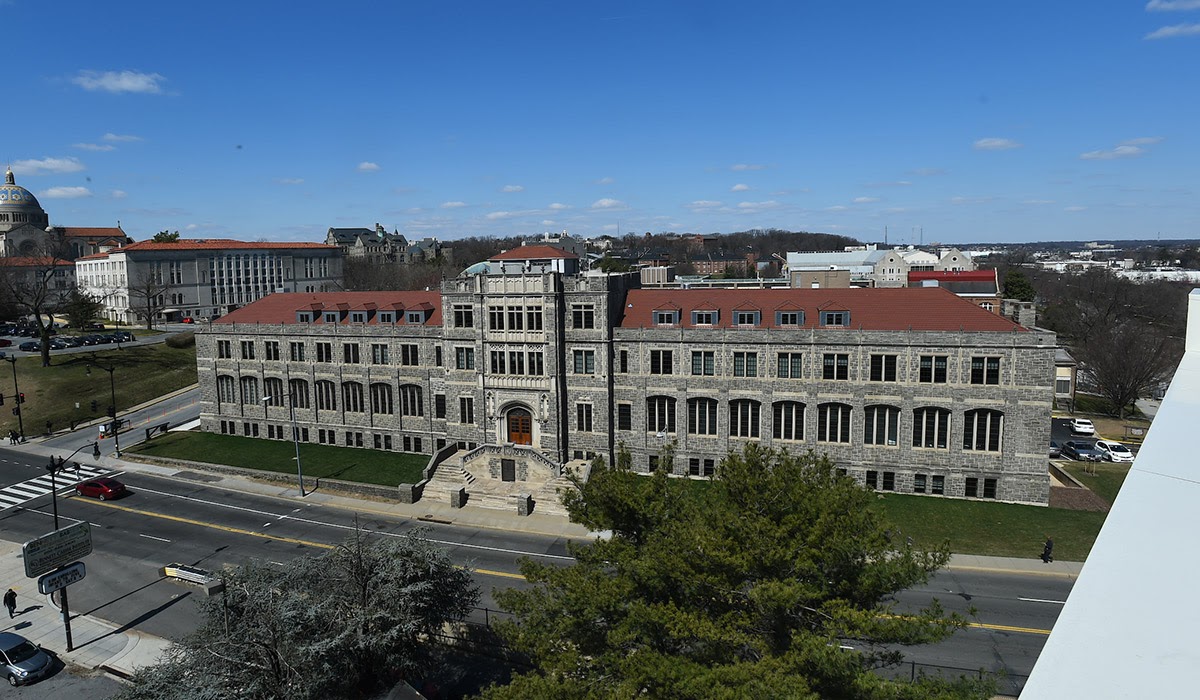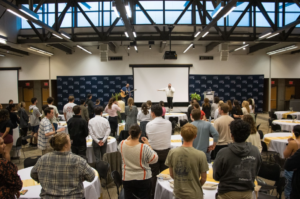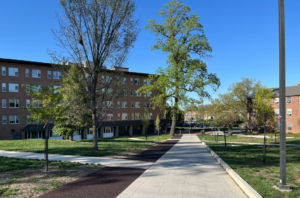Maloney Hall Rated LEED Gold

Courtesy of The Catholic University of America
By Angela Hickey
Catholic University has made many efforts in order to make campus as environmentally friendly as possible. In order to achieve a “greener” campus, the university is renovating and updating many of the older buildings. Maloney Hall was just certified as a Leadership in Energy and Environmental Design (LEED) Gold building, decidedly making it the greenest and most energy efficient building on campus.
Decided by the U.S. Green Building Council (USGBC), a LEED certification is given to buildings that display energy conservation, lowered water consumption, and responsible use of materials. In order to qualify for the certification, the requirements must be proved with evidence that they were met correctly.
LEED Gold is considered the second highest level of certification that can be appointed by the USGBC. With this certification, Maloney Hall joins some of the the top environmentally conscious buildings in the United States. Only about 36% of LEED-certified buildings are also appointed to a Gold level. Maloney ranks with many other LEED certified buildings on campus, such as The Edward M. Crough Center for Architectural Studies.
Originally constructed in 1917, the original hall was a chemical laboratory named in honor of a Philadelphia philanthropist and Catholic University benefactor, Martin Maloney. Maloney Hall is considered a prominent historical landmark by the campus community, taking up more than 60,000 square feet of CUA campus near two of the university’s main entrances. Eventually the building was closed in 2015 due to environmental concerns and aging infrastructure and underwent renovation and reconstruction in 2017.
During construction, crews took into consideration reducing construction and demolition waste and retaining and reusing as much of the original structure as possible. According to the Catholic University of America’s website, during the construction of Maloney, 92% of the construction waste was recycled, and 91% of structural elements remained.
The building has many energy efficient and green aspects that met the USGBC’s LEED Gold requirements. Maloney Hall features an extensive rainwater recovery system and low-flow bathroom fixtures in order to save water, as well as landscaping features such as native plants and trees which were carefully chosen to not rely on permanent irrigation systems. The building also includes low Volatile Organic Compound (VOC) paints and other wall finishes in order to ensure the health and wellness of all occupants of the building.
In addition to these features, Maloney Hall also contains efficiency-prioritized HVAC systems and LED fixtures installed throughout the entire building, automatic lighting controls, daylighting sensors, thermostats, and carbon dioxide monitors in order to prioritize energy efficiency and protect the CUA community.
Maloney Hall is one of the three CUA campus buildings to be LEED certified. The Edward M. Crough Center for Architectural Studies and Opus Hall were both designed with LEED standards in mind. Crough was a completely student-led project, headed up by the LEED Lab of Catholic University, in order to increase the number of energy efficient buildings on campus.
Compared to Maloney, Opus is designed to be 10.5% more energy-efficient than average residence halls. Its water fixtures are 20% more efficient than standard indoor plumbing fixtures, effectively reducing likely water waste. Crough was certified in 2014, with renovations led by the LEED Lab created by Associate Professor Patricia Andrasik. Andrasik’s course of monitoring the building, effectively making it more green and energy efficient, was soon after adopted by the USGBC to serve as a model for similar courses at other schools. As more buildings on campus become renovated with environmentally conscious improvements, Maloney is helping the campus come one step closer to becoming a fully environmentally friendly campus.








